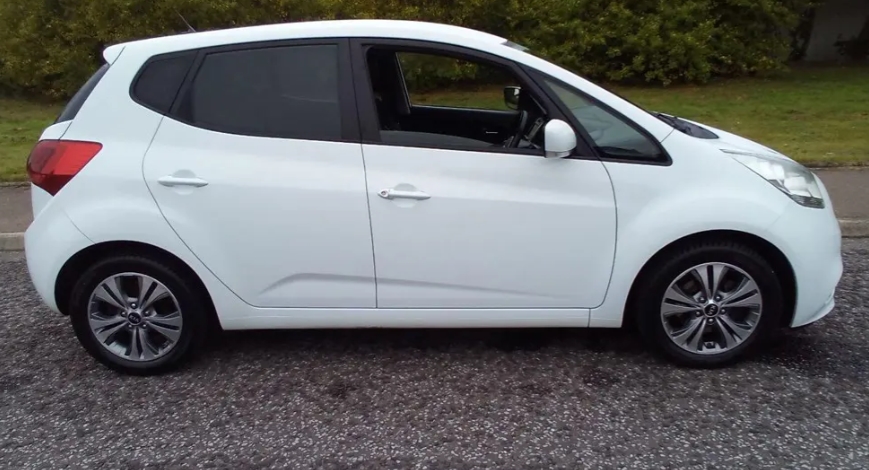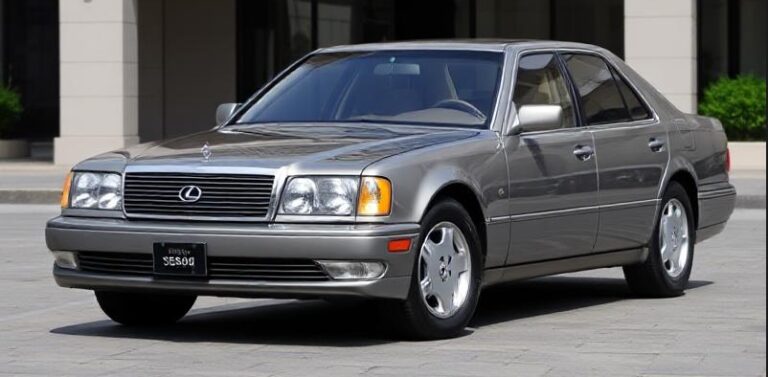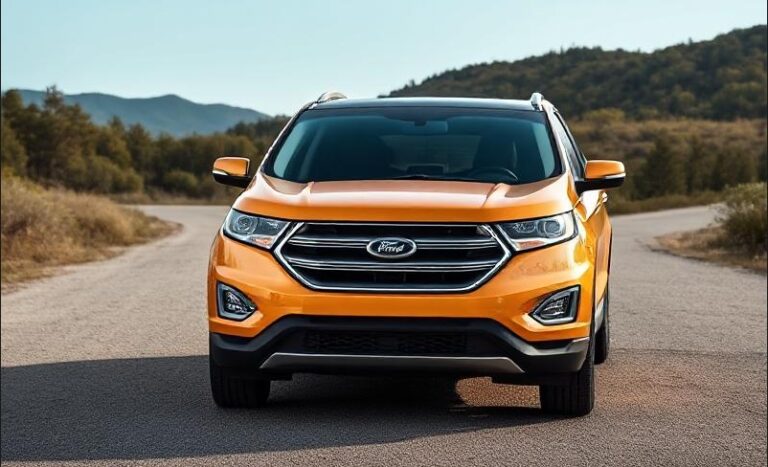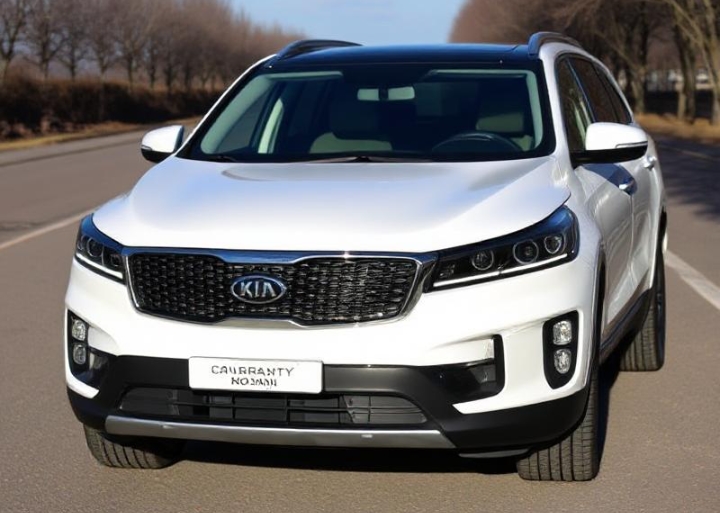The Unassuming Hero: An Evolutionary Decade of the Kia Venga
In the grand tapestry of automotive history, some cars are destined for supercar posters and motorsport glory, while others carve out a legacy built on quiet competence and intelligent design. The Kia Venga falls firmly into the latter category. Produced between 2009 and 2019, this B-segment MPV, or “mini-MPV,” was a masterclass in packaging, offering the interior space of a larger vehicle within the compact footprint of a supermini. It represented a pivotal moment for Kia, showcasing the brand’s transition from a budget-focused manufacturer to a design-led powerhouse known for quality, practicality, and exceptional value. This is the story of its evolution.
Genesis: From Concept No. 3 to Production Reality (2009)
The Venga’s story begins not with its own name, but with the “Kia No. 3” concept car, unveiled at the Geneva Motor Show in March 2009. Designed at Kia’s European design centre in Frankfurt, Germany, under the stewardship of the legendary Peter Schreyer, the No. 3 was a breath of fresh air. It previewed a vehicle that was compact yet remarkably spacious, stylish yet utterly functional. Its most striking feature was a unique diagonal C-pillar and a large, panoramic glass roof that promised an airy, open-plan cabin.
The public and press reaction was overwhelmingly positive, and Kia moved quickly. Just six months later, at the Frankfurt Motor Show in September 2009, the production version was unveiled, officially named the Venga. The name, derived from the Spanish word for “come on” or “let’s go,” perfectly encapsulated the car’s active, practical ethos.
Crucially, the production Venga retained the vast majority of the No. 3 concept’s design DNA. It shared its platform with the contemporary Kia Soul and Hyundai i20, but its longer wheelbase (2,615 mm) and high roofline (1,600 mm) were key to its class-leading interior volume. Peter Schreyer’s influence was immediately apparent in the confident “Tiger Nose” grille, a signature that would come to define the Kia brand. The Venga’s design was so well-received that it won the prestigious iF Design Award and Red Dot Design Award in 2010, accolades that cemented its credentials as a thoughtfully engineered and stylish product.
The First Generation: Establishing a Niche (2010 – 2014)
Production of the Kia Venga commenced in late 2009 at Kia’s Žilina plant in Slovakia, with the first models arriving in European showrooms for the 2010 model year. The Venga was engineered exclusively for the European market and was never sold in North America or Australia.
From its launch, the Venga’s primary selling point was its extraordinary practicality. The rear seats could slide fore and aft by up to 130 mm, allowing owners to prioritise either rear legroom or boot space. They also featured a 60:40 split and could fold completely flat, creating a cavernous, van-like loading bay. The boot itself had a dual-level floor, further enhancing its versatility.
The initial engine lineup was focused on efficiency and reliability, comprising:
1.4-litre CVVT Petrol: A 90 PS (89 bhp) unit paired with a 5-speed manual gearbox.
1.6-litre CVVT Petrol: A 125 PS (123 bhp) unit available with a 6-speed manual or a 4-speed automatic transmission.
1.4-litre CRDi Diesel: Available in two states of tune, 75 PS (74 bhp) and 90 PS (89 bhp), both mated to a 6-speed manual.
1.6-litre CRDi Diesel: The range-topping diesel, producing 128 PS (126 bhp) with a 6-speed manual.
Many models were available with Kia’s ISG (Idle Stop & Go) technology, which helped reduce fuel consumption and CO2 emissions in city driving.
The trim level structure, while varying slightly by country, generally followed a simple numerical hierarchy in key markets like the UK.
Venga 1: The entry-level model was surprisingly well-equipped for its time. Standard features typically included remote central locking, electric front windows, a CD player with USB and AUX ports, six airbags, and active front headrests. It usually sat on 15-inch steel wheels.
Venga 2: This was the sweet spot of the range and the likely volume seller. It built upon the ‘1’ by adding desirable features such as 16-inch alloy wheels, air conditioning, body-coloured door mirrors and handles, steering wheel-mounted audio controls, and crucially, Bluetooth connectivity for hands-free phone calls.
Venga 3: The top-tier trim level elevated the Venga into premium territory. It boasted larger 17-inch alloy wheels, a stunning panoramic sunroof (a key differentiator in the class), climate control, front fog lights, rear parking sensors, privacy glass, and part-leather upholstery.
Throughout this period, the Venga was praised for its comfortable ride, excellent visibility, and the peace of mind offered by Kia’s industry-leading 7-year/100,000-mile warranty. While it was never lauded for sharp handling or blistering performance, that was never its purpose. It was a car for families, for downsizers, for anyone who valued space and ease of use above all else.
The Mid-Life Facelift: A Modern Refresh (2015 – 2019)
By 2014, the automotive landscape was evolving. In-car technology was advancing rapidly, and design languages were becoming more sophisticated. To keep the Venga competitive, Kia gave it a comprehensive mid-life facelift, which was unveiled at the 2014 Paris Motor Show and went on sale for the 2015 model year.
The refresh was more than just a cosmetic tweak; it thoughtfully addressed key areas to modernise the vehicle.
Exterior Changes: The most noticeable change was at the front. The Venga received a larger, more prominent “Tiger Nose” grille with a high-gloss black mesh finish, bringing its look in line with newer Kia models like the Cee’d and Sportage. The lower air intake was redesigned, and the fog light surrounds were updated, often incorporating stylish LED Daytime Running Lights on higher-spec models. At the rear, the taillights were updated with a more modern internal graphic, sometimes featuring LED technology, and new alloy wheel designs were introduced across the range.
Interior Enhancements: Inside, the focus was on improving perceived quality and technology. The cabin received new, darker metal trim accents, a revised centre console layout, and upgraded seat upholstery patterns. The most significant upgrade was the introduction of Kia’s latest generation of audio-visual navigation (AVN) systems. Higher trim levels now featured a 7-inch touchscreen infotainment system with satellite navigation, a reversing camera, and enhanced connectivity options. Features previously reserved for larger cars, such as a heated steering wheel, also became available.
The engine lineup was largely carried over but was refined to meet the stricter Euro 6 emissions standards. The 4-speed automatic transmission on the 1.6-litre petrol engine was also replaced by a more modern and efficient 6-speed automatic.
The trim levels were updated to reflect the new equipment:
Venga 1 / 1 Air: The base model remained, with ‘1 Air’ denoting the inclusion of air conditioning as standard, which had become an essential feature for most buyers. Tyre Pressure Monitoring System (TPMS) also became standard across the line.
Venga 2: This trim level continued to be the core of the range. Post-facelift, it typically gained cruise control with a speed limiter, the 7-inch touchscreen with reversing camera and DAB radio, and electrically folding door mirrors.
Venga 3: The ‘3’ trim maintained its premium positioning. It added automatic air conditioning, heated front seats, and satellite navigation to the touchscreen system. It was the quintessential “all you need” specification.
Venga 4: In some markets, a new range-topping ‘4’ trim was introduced. This was the ultimate expression of the Venga, bundling every possible feature, including a heated steering wheel, smart key with a start/stop button, and full leather upholstery.
.
You’ve got that cool car, but is it resting in its own cool place?
It’s visually pleasing for the surrounding areas outside of your home to look as awesome as what’s stored inside your garage! If you desire a truly inspirational environment, you should check into these plans!

.
The Final Years and Discontinuation (2019)
Despite the successful facelift, the Venga’s final years were set against a seismic shift in consumer preference. The market for B-segment MPVs was rapidly shrinking, cannibalised by the meteoric rise of the compact crossover and B-segment SUV. Buyers who once sought the high driving position and practicality of a Venga were now drawn to the more fashionable, rugged styling of cars like the Nissan Juke and Renault Captur.
Kia, ever astute to market trends, responded accordingly. In 2017, it launched the Kia Stonic, a stylish and dynamic compact crossover based on the Rio platform. The Stonic offered a similar footprint to the Venga but with the raised ride height and SUV aesthetics that the market now craved.
With the Stonic effectively serving as its spiritual successor, the writing was on the wall for the Venga. Production quietly ceased in 2019 after a successful decade-long run.
Legacy
The Kia Venga may be gone, but its legacy is significant. It stands as a perfect example of a car designed with a clear and unwavering purpose: to maximise interior space and practicality within a minimal exterior footprint. It was a product of its time, perfectly serving the needs of a market that has since moved on.
For Kia, the Venga was a crucial stepping stone. It proved that the brand could compete with the European establishment on design, quality, and engineering, not just on price. The awards it won and the loyal customer base it built helped solidify the brand’s reputation for creating intelligent, reliable, and desirable vehicles. In the used car market today, the Venga remains a sought-after choice for those who continue to value its unique blend of virtues: an easy-to-park city car with the soul of a spacious family hauler. It was, and remains, an unassuming hero of practical car design.







